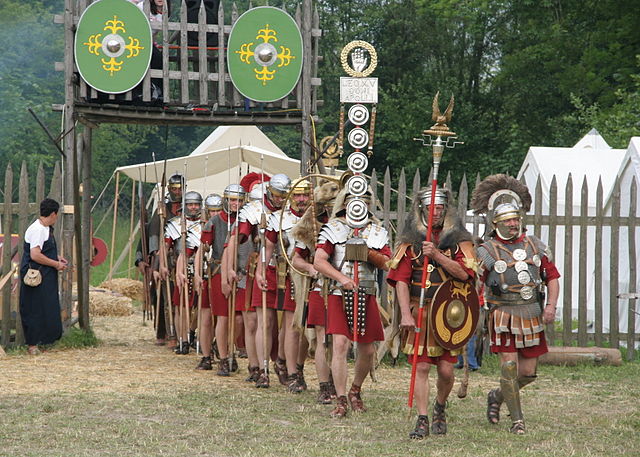-
3-minute read
-
21st September 2017
Grammar Tips: The Past Tense
You can’t live in the past (unless you’re a historical re-enactor). But you can write about it, as long as you know how to use the past tense. To help you out with that, here’s our grammatical guide to the different past tense forms and how they should be used.
Simple Past Tense
The most common form of the past tense is the simple past. This is used when discussing something that started and finished at a past time:
Our re-enactment of the Battle of Agrigentum ended in a stalemate.
Here, for instance, we use the past tense verb ‘ended’ to show that the re-enactment had finished by the time the sentence was written. Most past tense verbs follow this pattern of adding ‘-ed’ to the end of a base verb. But you should take care with irregular verbs:
Obviously, the Romans won in real life.
In this case, the past tense verb used is ‘won’ (not ‘winned’), since ‘win’ is an irregular verb.

(Image: MatthiasKabel/wikimedia)
Past Continuous
We use the past continuous (or past progressive) tense to describe a past action that occurred over a prolonged period of time:
We were fighting in the hot sun for hours.
As above, the past continuous tense is formed by combining ‘was’ or ‘were’ with the ‘-ing’ form of a verb. The past continuous can also be used to set the scene for another action:
While we were packing up, I lost my favourite sword.
Find this useful?
Subscribe to our newsletter and get writing tips from our editors straight to your inbox.
Subscribe to Beyond the Margins and get your monthly fix of editorial strategy, workflow tips, and real-world examples from content leaders.
In this sentence, ‘While we were packing up’ (past continuous) describes the time period during which something else happened. Note, too, that ‘were packing up’ refers to an ongoing (i.e. continuous) action, while the past simple ‘I lost my sword’ is a single event.

(Image: azboomer)
Past Perfect
The past perfect is used when referring to something that happened before something else:
Someone found my sword later, but we had gone home by then.
As with the sentence above, the past perfect is formed by combining ‘had’ and a past participle. In this case, ‘gone’ is the past participle of the irregular verb ‘go’. However, many past participles (like simple past tense verbs) only require adding ‘-ed’ to a verb.
Past Perfect Continuous
As the name suggests, the past perfect continuous combines elements of the past continuous and past perfect tenses. It is therefore used when describing a continuous action that happened before something else occurred. It is formed using ‘had been’ plus an ‘-ing’ verb:
We had been attending re-enactments for years before getting involved.
Here, for example, ‘had been attending’ describes an ongoing action that happened before the second part of the sentence (i.e. ‘getting involved’). It can also be used when attributing a cause:
We kicked Barry out of the group as he had been getting on everyone’s nerves.
This form of the past tense is less common than the others, but it is important in some situations.

(Photo: Oydman/wikimedia)